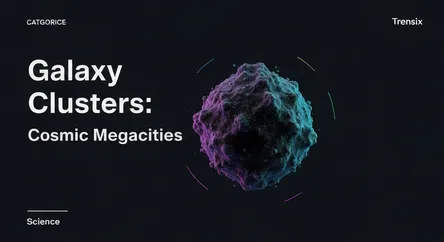Science
Galaxy Clusters: Cosmic Megacities

Explore galaxy clusters, the largest gravitationally bound objects in the universe, and learn how they help us understand dark matter and cosmic evolution.
What is it?
A galaxy cluster is a massive structure of hundreds to thousands of galaxies bound together by gravity. As the largest gravitationally bound objects known, their mass can be quadrillions of times that of our sun. The visible galaxies make up only a small fraction of a cluster's total mass. Most of it consists of the intracluster medium—a superheated gas between galaxies—and an enormous halo of dark matter. This mysterious substance provides the gravitational glue that holds the entire cosmic assembly together, making clusters key laboratories for studying it.
Why is it trending?
Galaxy clusters are a hot topic due to new observational capabilities from telescopes like the James Webb Space Telescope and the Euclid mission. These instruments allow astronomers to peer into the early universe and study how these massive structures formed and how galaxies evolve within them. By analyzing how a cluster's gravity bends light from more distant objects (gravitational lensing), scientists can map dark matter's distribution and test theories about dark energy, the force driving the universe's accelerated expansion. They are crucial for refining our standard model of cosmology.
How does it affect people?
Studying galaxy clusters directly expands our understanding of the universe's origin, composition, and fate. While they don't impact our daily lives, this research answers fundamental questions about our cosmic origins and confirms foundational theories like the Big Bang. The technological challenges of observing these distant structures drive innovation in optics, sensors, and computing. Ultimately, exploring these immense cosmic cities speaks to our innate curiosity, connecting humanity to the grand scale and history of the cosmos.